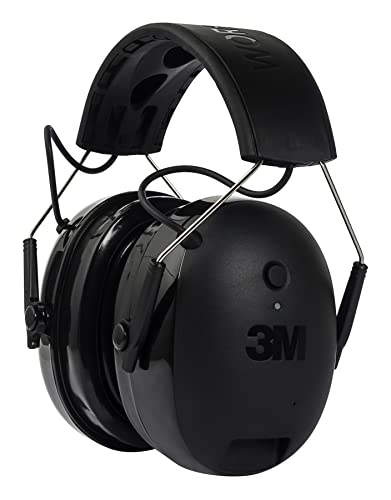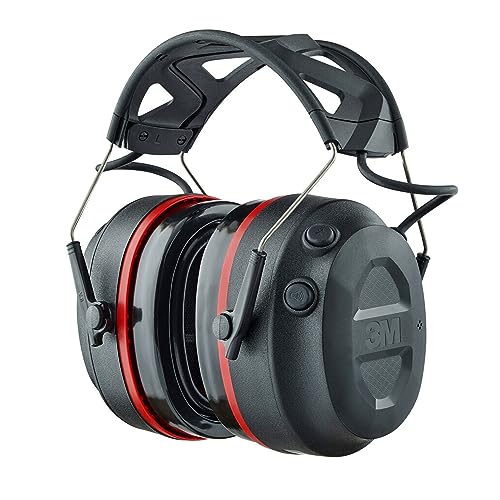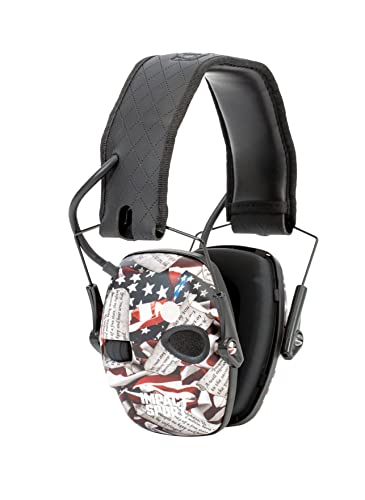In industrial and construction environments, hearing protection is crucial to prevent noise-induced hearing loss. OSHA (Occupational Safety and Health Administration) regulations require the use of hearing protection in many workplaces where noise levels exceed certain thresholds. To meet these requirements without sacrificing audio quality or comfort, consider OSHA-approved headphones. In this blog post, we’ll explore the top 5 OSHA-approved headphones, both wired and wireless, highlighting their strengths and weaknesses.
1. Elgin Bluetooth Hearing Protection

Strengths:
- Comfortable Fit: Elgin Bluetooth Hearing Protection features a padded headband and ear cushions for all-day comfort.
- Wireless Connectivity: Bluetooth technology allows for hassle-free pairing with devices.
- NRR 25: The NRR of 25 dB provides excellent noise protection in noisy environments.
Weaknesses:
- Slightly Heavier: Some users may find these earmuffs slightly heavier than other options, which could affect long-term comfort.
2. 3M WorkTunes Connect

Strengths:
- Wireless Convenience: The 3M WorkTunes Connect offers Bluetooth connectivity, allowing for wireless freedom while ensuring hearing protection.
- Noise Reduction: With an NRR (Noise Reduction Rating) of 24 dB, it effectively blocks out harmful noise while still delivering clear audio.
- Long Battery Life: The rechargeable battery provides up to 30 hours of use on a single charge, making it suitable for extended work shifts.
Weaknesses:
- Bulkier Design: Some users find the over-ear design a bit bulky, which may not be ideal for those needing a more streamlined option.
3. ISOtunes PRO 2.0 Bluetooth Earbuds

Strengths:
- Sleek and Lightweight: The ISOtunes PRO 2.0 offers a more inconspicuous design compared to earmuffs.
- Exceptional Battery Life: With a battery life of up to 16 hours, they can last through most work shifts.
- Noise Isolation: These earbuds provide an NRR of 27 dB, offering excellent noise isolation.
Weaknesses:
- Not Suitable for Extreme Environments: While they are great for most work environments, they may not be ideal for extremely loud settings.
4. 3M PELTOR Sport Tactical 100 Electronic Hearing Protector

Strengths:
- Active Noise Reduction: These earmuffs feature active noise reduction technology, allowing users to hear low-level sounds while still protecting against loud noises.
- Comfortable Fit: The cushioned ear cups and adjustable headband provide a comfortable and secure fit.
- NRR 22: While not the highest NRR, it still offers effective noise protection.
Weaknesses:
- Battery-Powered: Requires batteries for noise-cancelling features, so it’s important to have spare batteries on hand.
5. Honeywell Sync Wireless Earmuffs

Strengths:
- Wireless Convenience: Bluetooth connectivity ensures a cable-free experience.
- NRR 25: With an NRR of 25 dB, these earmuffs provide excellent hearing protection.
- Durable Build: Designed to withstand tough work environments, they are built to last.
Weaknesses:
- Slightly Tight Fit: Some users with larger heads may find them a bit snug after extended use.
Conclusion
Choosing the right OSHA-approved headphones depends on your specific needs and preferences. While earmuffs generally provide higher NRR ratings, earbuds offer more portability and a sleeker design. Consider factors like comfort, battery life, noise reduction, and connectivity when making your choice. Ultimately, all of these options provide effective hearing protection while allowing you to enjoy audio content in noisy work environments, helping you stay safe and entertained on the job.
